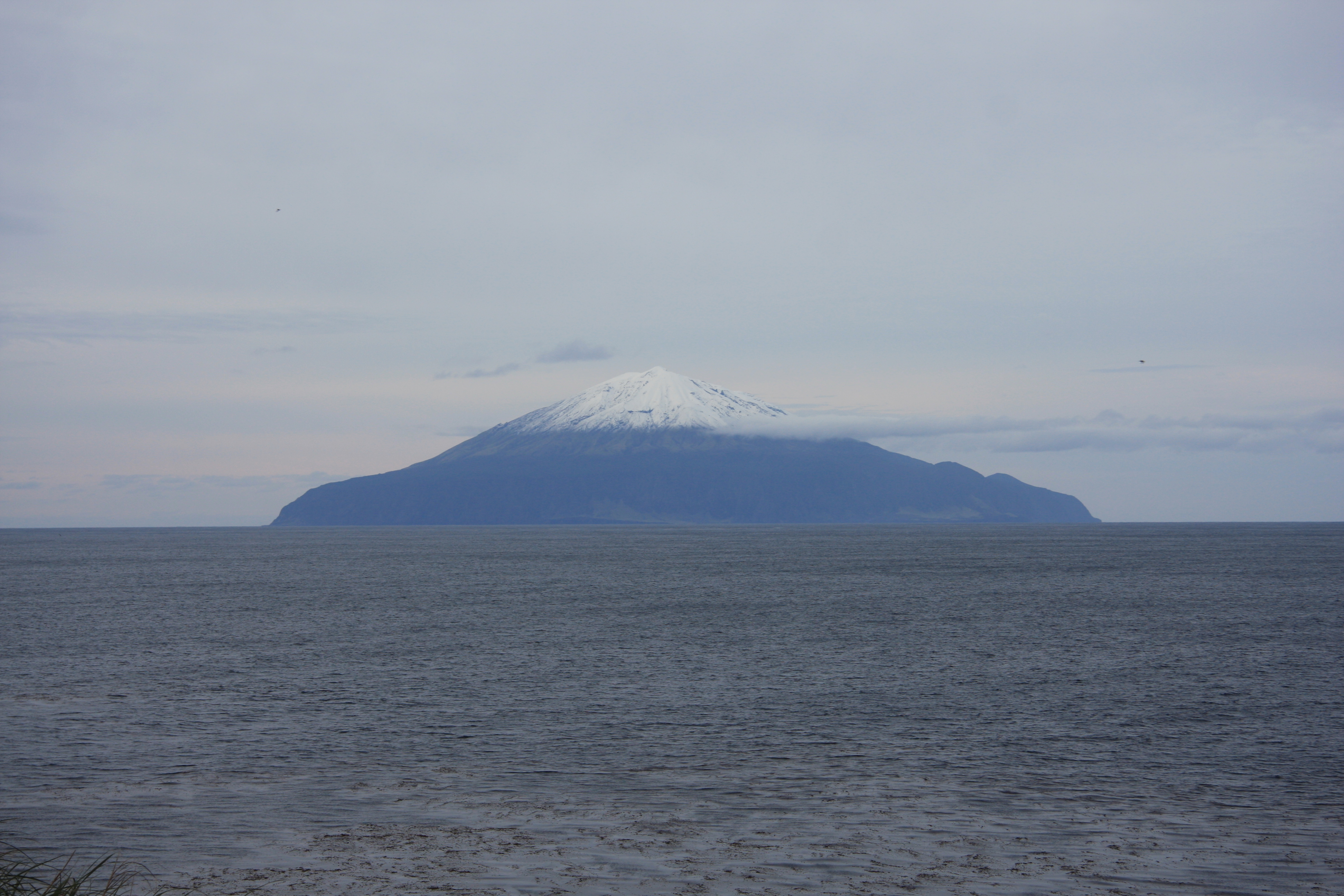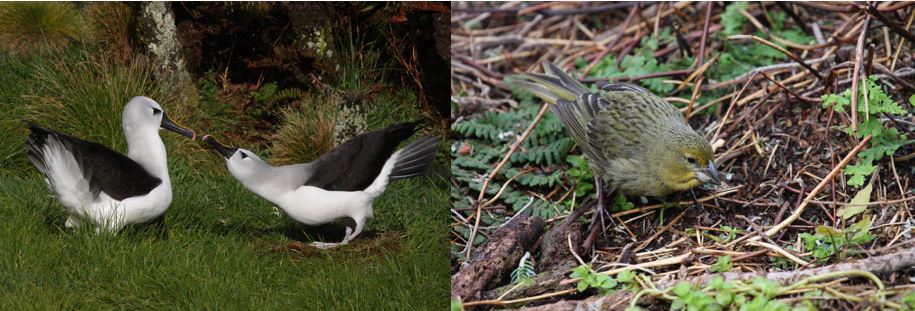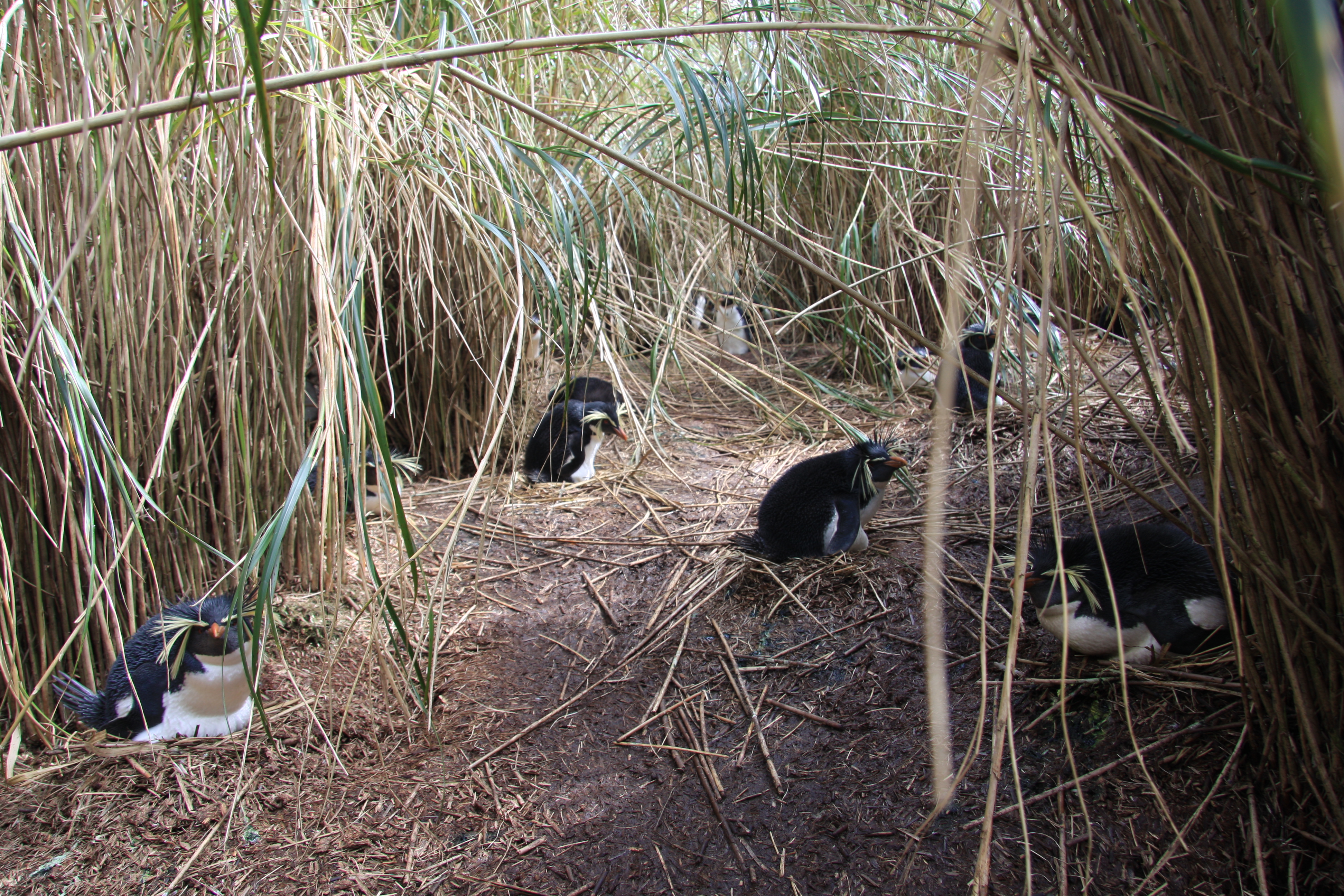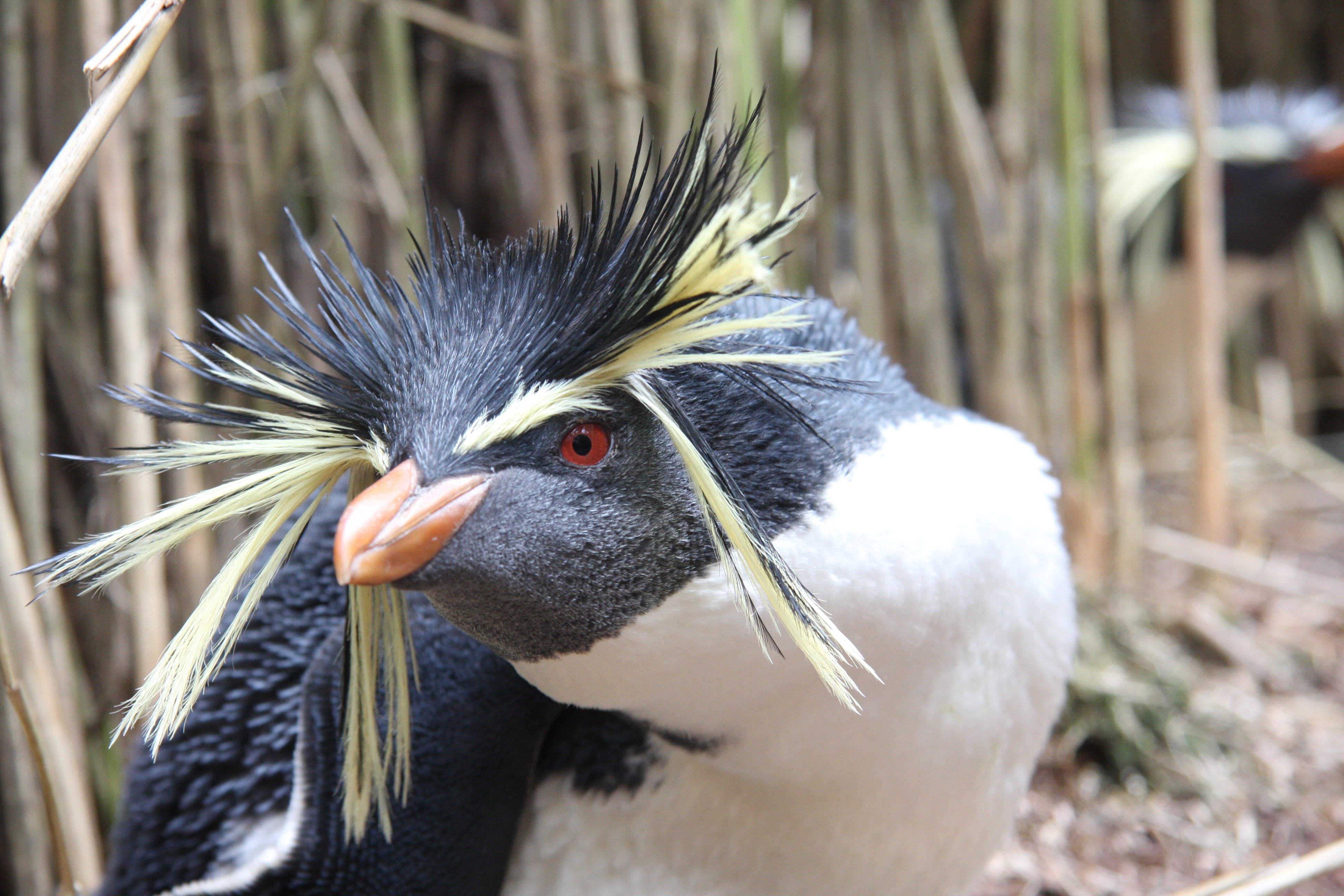Monitoring penguins in the South Atlantic
25 October, 2018
Norman Ratcliffe, a seabird biologist at British Antarctic Survey (BAS), studies the biology of seabirds and how this is impacted by climate change. Read this blog to find out about his latest fieldwork trip to the remote island of Tristan da Cunha in the middle of the South Atlantic.
What have I come to Tristan to study?
BAS are members of a multi-partner project aiming to gather information to help the Tristan community to manage its marine environment in a sustainable manner, allowing for uncertainties associated with climate change. As part of this, I am researching northern rockhopper penguins: an endangered species that only occurs on Tristan and Amsterdam Island in the Indian Ocean. Alongside partners at RSPB and Tristan Conservation I have been studying their foraging movements, population trends, breeding numbers and survival for several years to find out how best to conserve them. This fieldwork aimed to gather more data to add to our understanding of the species.
It’s a long way to Tristan
Tristan is known as the most remote inhabited island in the world. Our study site is even more remote, a further 40km SE, on the uninhabited Nightingale Island. It took us 6 days by boat to travel from Cape Town to Tristan. Then, after a short but exhilarating helicopter ride, my two companions and I were dropped off by the hut that was to be our home for the next three weeks. Richard Phillips from BAS was here to study Atlantic Yellow-nosed Albatrosses, while Ben Dilley from Cape Town University was studying the Wilkins’s Bunting: one of the rarest birds in the World.

No Nightingales on Nightingale Island:
Upon arrival we saw plenty of Tristan Thrushes, but no Nightingales. We later discovered that our study site was in fact named after Captain Gamaliel Nightingale who first discovered the island in 1760. The island is mostly covered with 8ft tall bamboo-like tussac grass. However, there is also a plateau that supports a forest of lichen-covered Phylica trees, habitat for the bunting, and “Ponds” (that are actually bogs) where most of the albatrosses breed.

So where are all the penguins? There are around 20,000 pairs in four colonies near our hut, but they are hidden beneath the tussac grass. This is a great place for a colony as the canopy of grass protects them from sun, wind, rain and marauding skuas, but it does make them hard to study compared to Antarctica, where penguins nest in the open.

Bar-coded penguins
To get a close-up view of the penguins, I have to spend a lot of time bent double or on my hands and knees, watching out for their sharp hooked beaks! Due to the difficulties of direct observation in this habitat we have adopted a high-tech solution to data collection. A few hundred birds have been injected with tiny microchips (like the ones a vet puts in your pet cat or dog). Their comings and goings are recorded automatically every time they pass over the antennae we have placed across the two walkways into the colony. It’s a bit like your shopping being scanned at the checkout when you go to the supermarket! This way we can obtain data on attendance patterns, age of first breeding and annual mortality rates, even when we are not on the island.

Migration patterns: The microchip system provides excellent data from the colony, but penguins are on migration at sea for much of the year: so where do they go and what threats do they encounter there? We are investigating this by fitting birds with small geolocator tags mounted on leg rings. Based on the time, light and temperature data these collect we can work out where the birds travel during migration with an accuracy of around 150km. I have been recovering those that were deployed last year, which will enable us to look at consistency in migration paths at the population and individual level by comparison with tracks from previous years.
Noisy neighbours: After a long day in the field what you really need is a good night’s sleep, but that isn’t easy thanks to our noisy neighbours. The island is covered with millions of nocturnal seabirds: prions, shearwaters and storm petrels. On dark, moonless nights they pour ashore and call incessantly on the wing, from their burrows and even under our hut! It is an amazing cacophony and seeing them wheeling overhead in torchlight like snowflakes in a blizzard is spectacular, but they don’t half keep you awake. Luckily we were given ear plugs for the helicopter ride over to the island, so we put these to good use every night!